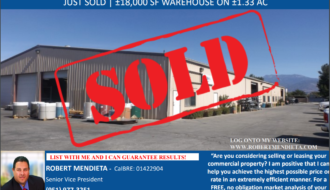How to estimate the value commercial property?
 Income properties can be evaluated by any real estate professional with simple valuation methods. One particular method of valuation is more accurate than another, depending on the type and size of the investment property you are analyzing. No matter which method you use, you must conduct a thorough rental survey of similar properties so you can see if the property you are evaluating has rental rates at market or under market. It is very important to keep many factors in mind such as location, condition, amenities, vacancy rates, and the investment marketplace which can affect the subject property’s value. Otherwise, you could overvalue or even undervalue/underselling a property.
Income properties can be evaluated by any real estate professional with simple valuation methods. One particular method of valuation is more accurate than another, depending on the type and size of the investment property you are analyzing. No matter which method you use, you must conduct a thorough rental survey of similar properties so you can see if the property you are evaluating has rental rates at market or under market. It is very important to keep many factors in mind such as location, condition, amenities, vacancy rates, and the investment marketplace which can affect the subject property’s value. Otherwise, you could overvalue or even undervalue/underselling a property.
A very simple, but least accurate valuation method is the GROSS RENT MULTIPLIER method, which is mostly used on multi-family properties. You look at other recent local sales, take their selling price, divide it by the stated gross rents to arrive at a “times gross” factor, which is then multiplied by the subject property’s gross rents to determine the value.
ie. Say your 20-unit property’s scheduled rents are $600/mo (600x20units= $12,000x12mo/yr= $144,000 gross annual rent). Local apartments are selling for 5 times the gross annual rent (the “times gross” factor), so you value this building at $720,000 ($144,000×5). Keep in mind the other factors that can affect the value in order to see if an adjustment is needed.
A more accurate form of valuation is by using the CAPITALIZATION OF NET INCOME method. To find the property’s value, you divide the property’s income (NOI – ALL income minus ALL expenses, except for any debt and taxes) by the desired rate of return (Cap Rate). You should get an idea of other property’s cap rate by dividing their NOI by their sales price. You still should use a current rental survey to see if the property could achieve a higher NOI. But value the property somewhere below the max value in case of a loss of scheduled rents.
There are more accurate methods such as the IRR method mostly used by institutional investors, but requires more info and you will have to do more work.
Commercial properties are almost always valued best from the income approach to value. Being a commercial appraiser and commercial broker, there are many ways to value a property based on the purpose. Such as for bank financing, estate purposed, insurance loss, etc. If you just want to get a general idea of where your property may be, I would suggest using the IRV Formula. I= Income, R = Rate and V = value. If you know two out of three you can solve for the third varialbe. There are three formulas: I = R * V; R = I / V and V = I / R. You can memorize the formulas or use the visual approach like I do.
Draw a circle and then a horizontal line from left to right that make two half’s; one at the top and one at the bottom of the circle. Next, on the bottom half of the circle draw a vertical line from top to bottom making the bottom half of the circle each 1/4 of the whole circle. Now put the “I” on the top half of the circle above the horizontal line; put the “R” in the bottom left (1/4 of the circle) and then the “V” in the bottom right (1/4 of the circle).
The horizontal line acts like a division symbol and the vertical line acts like a multiplication symbol. Now just look at the formulas and you can see that if you are solving for the value of a property, you take the income and divide by the rate.
Note that the income is the NOI not the gross and Rate is the going cap rate in your market for whatever property type you are trying to value. You will need to figure out the cap rate.
NOI can be derived in many ways and cap rates are open to interpretation, so this is just a ball park method unless you know that the NOI and cap rate are well supported for your property.
For a Free, comprehensive analysis of Valuation for your Commercial property…





